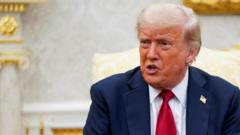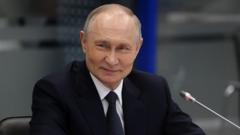Zurab Tsereteli, a prominent sculptor whose grandiose creations often polarized audiences, died at 91. His art ranged from homages to influential leaders to contentious memorials, making him a figure of substantial debate in both Russian and international art circles.
Zurab Tsereteli, Controversial Russian Sculptor, Passes Away at 91

Zurab Tsereteli, Controversial Russian Sculptor, Passes Away at 91
The artist known for his monumental and often divisive works leaves behind a mixed legacy, celebrated by some and criticized by many.
Zurab K. Tsereteli, a Georgian-Russian artist renowned for his monumental sculptures, passed away on Tuesday at his residence outside Moscow at the age of 91. His death was confirmed by Sergei Shagulashvili, his assistant. Russian President Vladimir V. Putin extended his condolences, labeling Tsereteli as “an outstanding representative of multinational Russian culture.”
Tsereteli's oeuvre largely embodied a lavish and exuberant aesthetic that resonated with the Kremlin authorities, yet alienated numerous critics. A notable admirer of Putin, he unveiled a grand bronze statue of the Russian leader in 2004, depicting him in a judo uniform. The artwork faced such backlash that it remained in Tsereteli's gallery rather than being displayed publicly.
Within the post-Soviet realm, Tsereteli's distinctive style and bold expressions helped shape the artistic landscape. In navigating political sensitivities, he found favor as an unofficial court artist during the 1990s, engaging both the Kremlin and the Georgian government as the latter sought to define a separate national identity post-independence.
In Tbilisi, Georgia's capital, Tsereteli constructed the Freedom Monument, a significant alternative to the former statue of Vladimir Lenin, following the dissolution of the Soviet Union. Despite his achievements, Tsereteli faced frequent criticism in Georgia for his prolonged affiliation with Russia, with many viewing his work as contentious.
His colossal monuments, including a statue of St. George defeating a dragon, symbolized the complexities of national identity, embedding him in a landscape of both veneration and disdain. Tsereteli's legacy, marked by both grand celebrations and fierce opposition, ensures his place in art history as a figure who navigated the intersection of politics and creativity.




















